


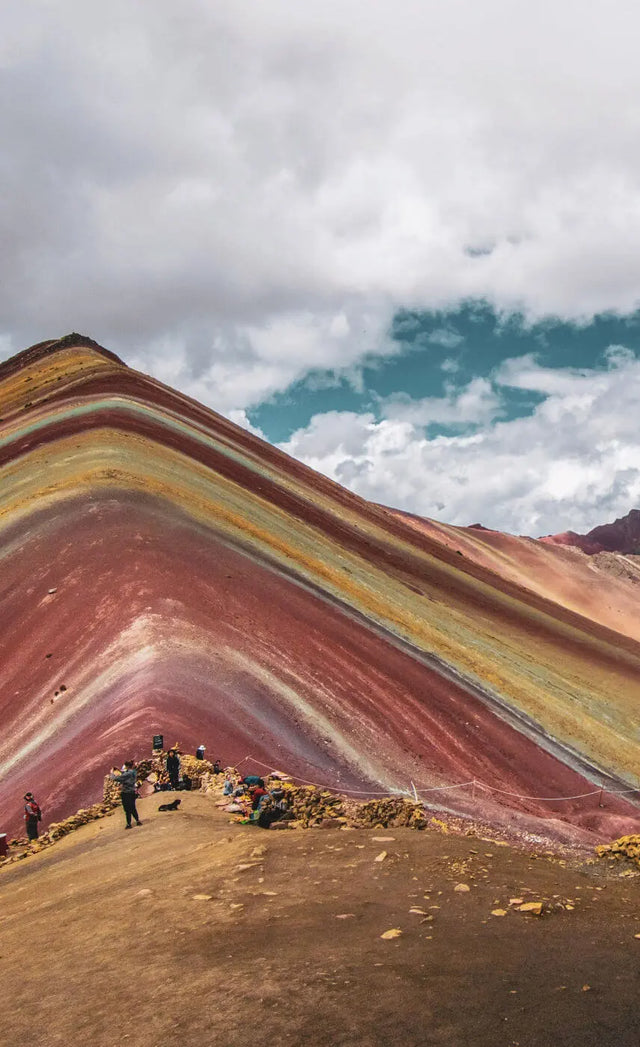
Standing at the top of Rainbow Mountain, with its breathtaking layers of color, is an awe-inspiring experience. The mountain has been around for thousands of years but has only recently gained popularity as a geological wonder.
Here you'll find:
• How the mountain has changed over the past decade
• The surrounding local communities
•
How to get there
•
How the mountain formed
•
Rainbow Mountain's real name
•
Tips for visiting Rainbow Mountain
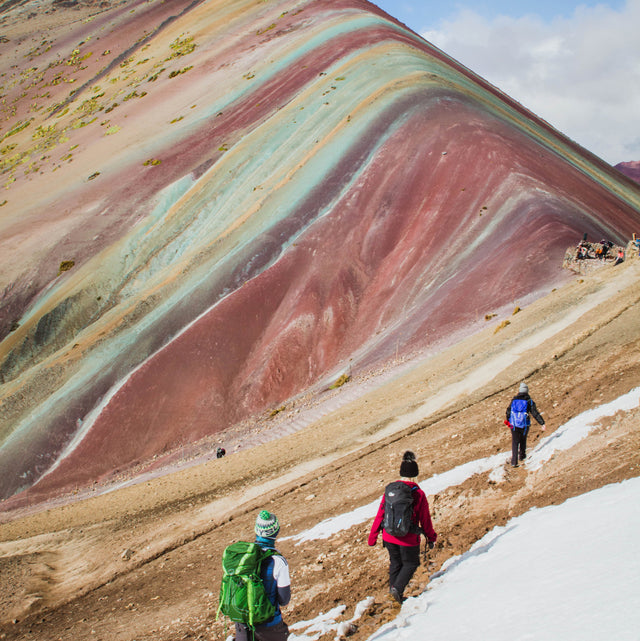
Unveiling Rainbow Mountain
Rainbow mountain gaining popularity
When Noah first started coming to Rainbow Mountain, it was much more wild: “There was one time I saw fifteen Vicuñas [the ancestors of alpacas] crossing Rainbow Mountain. It was one of the most magical things to see. They were healthy and large and they didn’t care about us being there. Seeing them in a wild herd like this moving across Rainbow Mountain was magical. It almost brought me to tears.” Noah recalls.
“Another time I saw a condor flying around the ridge.” Now Noah no longer sees the wildlife he once did on Rainbow Mountain. When Noah first started going to Rainbow Mountain he might have seen ten to fifteen people in a day, now he says it's not unusual to see hundreds. He describes the feeling of watching Rainbow Mountain change over time as both good and bad: “It’s sad to see the wildlife move away and the mountain lose some of its serenity. But at the same time, I accept it because this happens everywhere. Maybe one day they will even build a gondola,” Noah says.
While he is disappointed in parts of this change he also sees how this impacts the local communities and how it benefits their economy: “The popularity of Rainbow Mountain gives income to the families. These resources create businesses, like little stores, and the local kids can get their education.” And while Rainbow Mountain has changed, there are still ways to experience the wilderness off the beaten path.




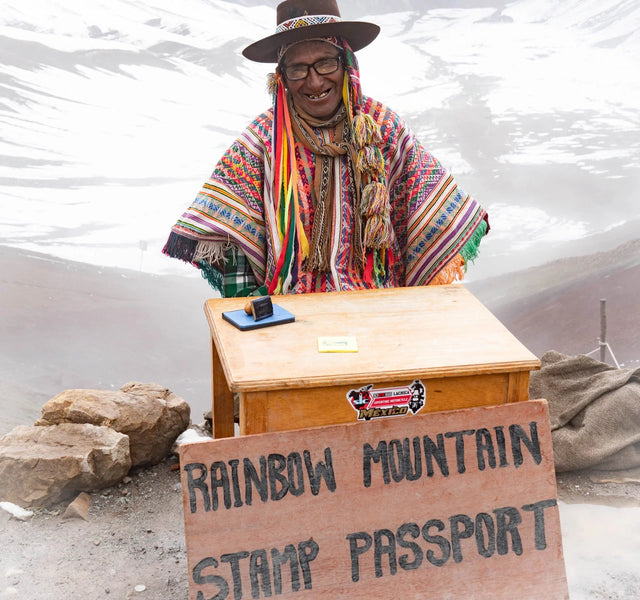
The communities around Rainbow Mountain
At first, visitors needed to hike Rainbow Mountian from the east and cross over to the lookout on the west. This was the longest possible route; it took extra time to get there by car and foot. As communities to the west started to build new paths to attract visitors, and gain economic benefits, the route grew shorter, and shorter. The main path to Rainbow Mountain now begins on the furthest western edge, closest to Cusco. “On the eastern side, there are now a few ghost towns,” Noah says, describing the areas where the old paths were once popular.
How to get to Rainbow Mountain
The most popular way to get to Rainbow Mountain only takes a day from Cusco. Although, for adventurous hikers, there are other options.
To get to Rainbow Mountain, you’ll need to drive along the highway Cusco-Puno for two hours. You’ll then take a detour onto a dirt road just after the town of Cusipata. You’ll drive another hour on the dirt road up to a parking lot at 15,580 feet elevation. 15 minutes before the parking lot you will reach a checkpoint where you can buy your tickets. The entrance is 20 soles for foreigners and 15 for Peruvians. From there you can start your hike. You can either choose to go by foot or horseback. Horseback takes 40 to 50 minutes, while hiking will take about 3.5 hours there and back. At the lookout you’ll be at 16,500 feet. The lookout offers the best views and location for pictures.
If you are like Noah and prefer to experience a bit more of the wilderness, you can take one of the original paths and approach from the east.
For the truly adventurous, you can even take the Ausangate trek. You can learn more about the Ausangate trek here. There are two different Ausangate treks that will take you to Rainbow Mountain. They both start on the northern side of Ausangate and cross to the south side. From there you'll approach Rainbow Mountain from the west. For the four-day hike, you finish at Rainbow Mountain's base. If you are looking for a longer adventure, you can opt for the seven day hike that winds back around after Rainbow Mountain to the north side of Ausangate, where you end up at the seven lakes.
How was Rainbow Mountain created?
Rainbow Mountain actually existed before the Andes. At one point, these colors were flat and horizontal, each layer representing its own time in Earth’s history with a unique mineral composition. Imagine a cake with layers. When the tectonic plates began to collide over 45 million years ago -- a process called subduction -- the Andes were formed, pushing these geological plates into the wavy mountain formations you see today. These distinct hues come from goethite, hematite, oxidized iron (red), oxidized copper (teal), and even iron with sulfur (yellow). There still remains a lot of scientific investigation to further understand this masterpiece.
What is Rainbow Mountain's real name?
In Peru, the actual name for Rainbow Mountain is “Vinicunca”. As a native Quechua speaker, Noah told us, "Vinicunca doesn't actually have a direct meaning in Quechua. The second half of the word 'cunca' means neck." In Quechua, any mountain or hill can be called cunca.
"But not even the locals know what 'vini' means," Noah laughs."I speak Quechua, so they can't tell me a made-up meaning." He thinks the name is a mixture of Quechua and Aymara: "Once, the area was populated by Aymara people. When the Quechua people moved into the region, I think they kept some of the Aymara names and mixed them with our language."
"Every time I go there, it's always something special. You can't control the Andes Mountains, and the weather is constantly changing. The best way to enjoy it is to not expect anything." - Noah
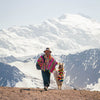
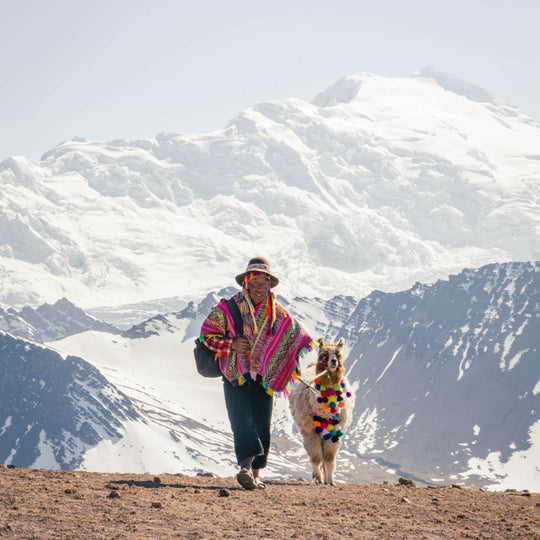

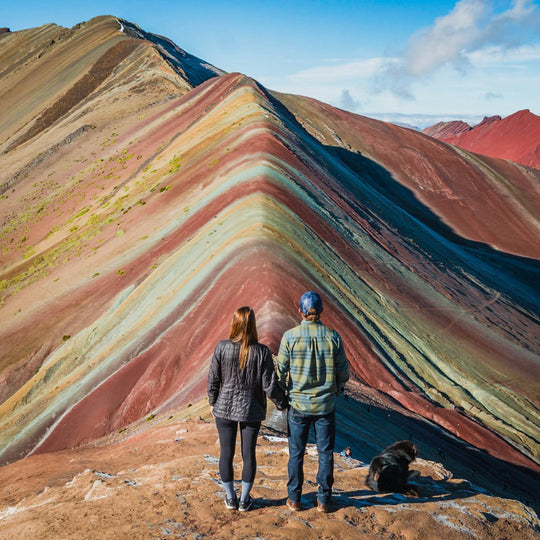
"Every time I go there, it's always something special. You can't control the Andes Mountains, and the weather is constantly changing. The best way to enjoy it is to not expect anything." - Noah

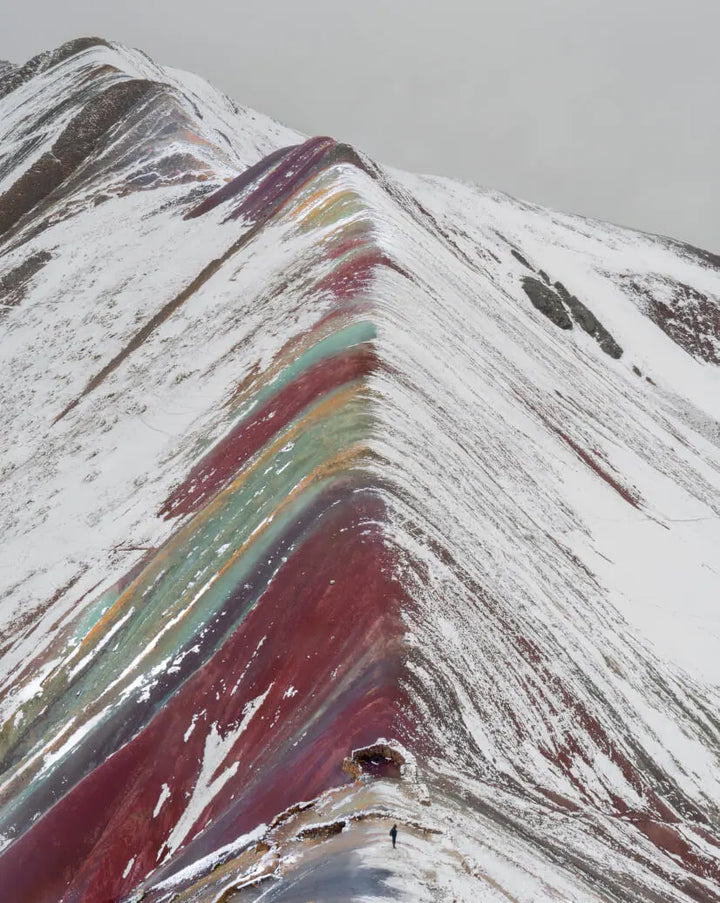
When to visit Rainbow Mountain
On its own, Rainbow Mountain is a remarkable; adding to this wonder is its variability. Surrounded by the Andes Mountains, the climate of Rainbow Mountain can drastically change hour-to-hour, so that every time you visit can be a completely different experience: “I wouldn’t say I've seen it all, but I've seen it more than anybody else who visits” Noah said.
“I’ve been hiking the mountain for over 8 years, and every time I've gone I see something different and special." The hike is beautiful from start to finish. When you walk off the bus, on a clear day, you can see part of the Ausangate mountain range covered in ice. The morning sun comes up behind the mountain range, and the edges glow. Even if you don't go on a day where the colors of rainbow mountain are stark, there's so much to enjoy. For Rainbow Mountain to boast its most brilliant range of colors, the sun needs to be shining and the soil needs to be damp.
"My favorite time to visit the mountain is actually in the rain," said Noah. Sometimes the colors are muted because of snow or clouds. It's all very unpredictable.
"I’ve been there when the wind is so strong it gives you a headache. Another time it was snowing so hard the snow was up to my knees," Noah recalled. That goes to show, every experience at Rainbow Mountain is unique.
Here's some tips on how you can make the most of your visit:
• Get there early and give yourself a full day. This will give you the best chance for a great view, with the changing weather.
• Enjoy the views on the trek up to the lookout. Along the way you will see incredible views of Ausangate.
• Go with an open mind.
• Bring proper gear depending on weather. Most of the time, it’s cold, so bundle up in your favorite alpaca gear.
• The altitude climb from Cusco to Rainbow mountain is over 4,000 feet. So, bring plenty of water and electrolytes, along with pain killers or altitude medicine, if you have it.
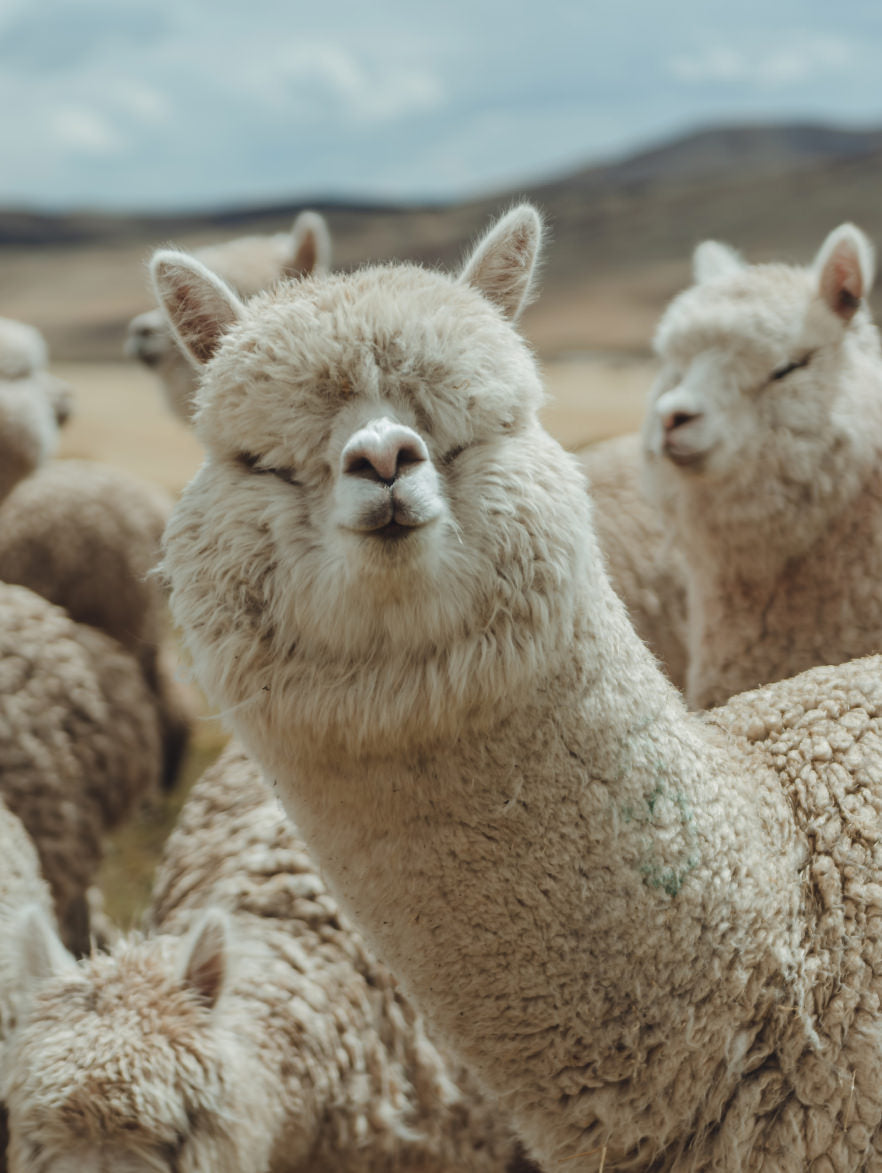
Join the herd.
We grant our community private access to new products and exclusive offers.









